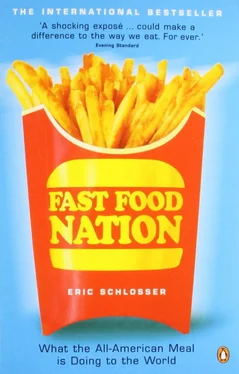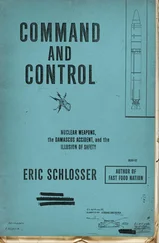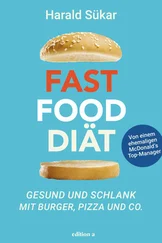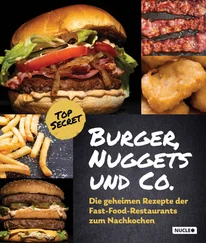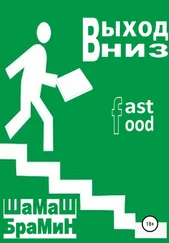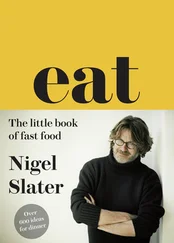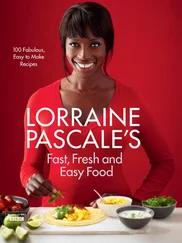Many of the exhibits at the Ray A. Kroc Museum incorporate neat technological tricks. Dioramas appear and then disappear when certain buttons are pushed. The voices of Kroc’s friends and coworkers — one of them identified as a McDonald’s “vice president of individuality” — boom from speakers at the appropriate cue. Darkened glass cases are suddenly illuminated from within, revealing their contents. An artwork on the wall, when viewed from the left, displays an image of Ray Kroc. Viewed from the right, it shows the letters QSC and V. The museum does not have a life-size, Audio-Animatronic version of McDonald’s founder telling jokes and anecdotes. But one wouldn’t be out of place. An interactive exhibit called “Talk to Ray” shows video clips of Kroc appearing on the Phil Donahue Show , being interviewed by Tom Snyder, and chatting with Reverend Robert Schuller at the altar of Orange County’s Crystal Cathedral. “Talk to Ray” permits the viewer to ask Kroc as many as thirty-six predetermined questions about various subjects; old videos of Kroc supply the answers. The exhibit wasn’t working properly the day of my visit. Ray wouldn’t take my questions, and so I just listened to him repeating the same speeches.
The Disneyesque tone of the museum reflects, among other things, many of the similarities between the McDonald’s Corporation and the Walt Disney Company. It also reflects the similar paths of the two men who founded these corporate giants. Ray Kroc and Walt Disney were both from Illinois; they were born a year apart, Disney in 1901, Kroc in 1902; they knew each other as young men, serving together in the same World War I ambulance corps; and they both fled the Midwest and settled in southern California, where they played central roles in the creation of new American industries. The film critic Richard Schickel has described Disney’s powerful inner need “to order, control, and keep clean any environment he inhabited.” The same could easily be said about Ray Kroc, whose obsession with cleanliness and control became one of the hallmarks of his restaurant chain. Kroc cleaned the holes in his mop wringer with a toothbrush.
Kroc and Disney both dropped out of high school and later added the trappings of formal education to their companies. The training school for Disney’s theme-park employees was named Disneyland University. More importantly, the two men shared the same vision of America, the same optimistic faith in technology, the same conservative political views. They were charismatic figures who provided an overall corporate vision and grasped the public mood, relying on others to handle the creative and financial details. Walt Disney neither wrote, nor drew the animated classics that bore his name. Ray Kroc’s attempts to add new dishes to McDonald’s menu — such as Kolacky, a Bohemian pastry, and the Hulaburger, a sandwich featuring grilled pineapple and cheese — were unsuccessful. Both men, however, knew how to find and motivate the right talent. While Disney was much more famous and achieved success sooner, Kroc may have been more influential. His company inspired more imitators, wielded more power over the American economy — and spawned a mascot even more famous than Mickey Mouse.
Despite all their success as businessmen and entrepreneurs, as cultural figures and advocates for a particular brand of Americanism, perhaps the most significant achievement of these two men lay elsewhere. Walt Disney and Ray Kroc were masterful salesmen. They perfected the art of selling things to children. And their success led many others to aim marketing efforts at kids, turning America’s youngest consumers into a demographic group that is now avidly studied, analyzed, and targeted by the world’s largest corporations.
RAY KROC TOOK THE McDonald brothers’ Speedee Service System and spread it nationwide, creating a fast food empire. Although he founded a company that came to symbolize corporate America, Kroc was never a buttoned-down corporate type. He was a former jazz musician who’d played at speakeasies — and at a bordello, on at least one occasion — during Prohibition. He was a charming, funny, and indefatigable traveling salesman who endured many years of disappointment, a Willy Loman who finally managed to hit it big in his early sixties. Kroc grew up in Oak Park, Illinois, not far from Chicago. His father worked for Western Union. As a high school freshman, Ray Kroc discovered the joys of selling while employed at his uncle’s soda fountain. “That was where I learned you could influence people with a smile and enthusiasm,” Kroc recalled in his autobiography, Grinding It Out , “and sell them a sundae when what they’d come for was a cup of coffee.”
Over the years, Kroc sold coffee beans, sheet music, paper cups, Florida real estate, powdered instant beverages called “Malt-a-Plenty” and “Shake-a-Plenty,” a gadget that could dispense whipped cream or shaving lather, square ice cream scoops, and a collapsible table-and-bench combination called “Fold-a-Nook” that retreated into the wall like a Murphy bed. The main problem with square scoops of ice cream, he found, was that they slid off the plate when you tried to eat them. Kroc used the same basic technique to sell all these things: he tailored his pitch to fit the buyer’s tastes. Despite one setback after another, he kept at it, always convinced that success was just around the corner. “If you believe in it, and you believe in it hard,” Kroc later told audiences, “it’s impossible to fail. I don’t care what it is — you can get it!”
Ray Kroc was selling milk-shake mixers in 1954 when he first visited the new McDonald’s Self-Service Restaurant in San Bernardino. The McDonald brothers were two of his best customers. The Multimixer unit that Kroc sold could make five milk shakes at once. He wondered why the McDonald brothers needed eight of the machines. Kroc had visited a lot of restaurant kitchens, out on the road, demonstrating the Multimixer — and had never seen anything like the McDonald’s Speedee Service System. “When I saw it,” he later wrote, “I felt like some latter-day Newton who’d just had an Idaho potato caromed off his skull.” He looked at the restaurant “through the eyes of a salesman” and envisioned putting a McDonald’s at busy intersections all across the land.
Richard and “Mac” McDonald were less ambitious. They were clearing $100,000 a year in profits from the restaurant, a huge sum in those days. They already owned a big house and three Cadillacs. They didn’t like to travel. They’d recently refused an offer from the Carnation Milk Company, which thought that opening more McDonald’s would increase the sales of milk shakes. Nevertheless, Kroc convinced the brothers to sell him the right to franchise McDonald’s nationwide. The two could stay at home, while Kroc traveled the country, making them even richer. A deal was signed. Years later Richard McDonald described his first memory of Kroc, a moment that would soon lead to the birth of the world’s biggest restaurant chain: “This little fellow comes in, with a high voice, and says, ‘hi.’”
After finalizing the agreement with the McDonald brothers, Kroc sent a letter to Walt Disney. In 1917 the two men had both lied about their ages to join the Red Cross and see battle in Europe. A long time had clearly passed since their last conversation. “Dear Walt,” the letter said. “I feel somewhat presumptuous addressing you in this way yet I feel sure you would not want me to address you any other way. My name is Ray A. Kroc… I look over the Company A picture we had taken at Sound Beach, Conn., many times and recall a lot of pleasant memories.” After the warm-up came the pitch: “I have very recently taken over the national franchise of the McDonald’s system. I would like to inquire if there may be an opportunity for a McDonald’s in your Disneyland Development.”
Читать дальше
